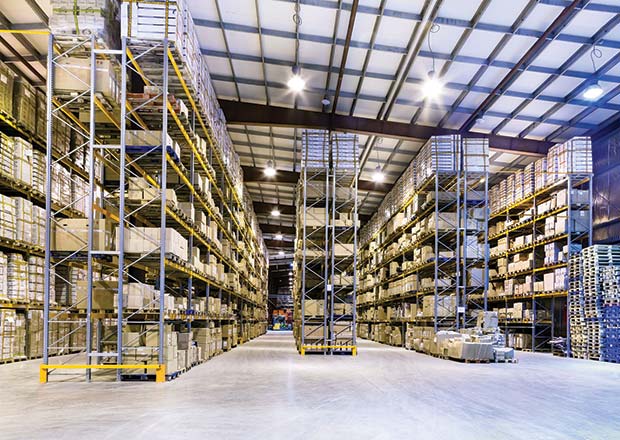Dramatic reductions in energy bills and maintenance costs can be the result of implementing sensor-controlled lighting – but only if you choose the right system, says Peter Lawrence, managing director of market-leading lighting sensor technology provider Steinel (UK) Ltd.

From manufacturers to wholesalers to transport operations and beyond, businesses are understandably motivated to streamline their warehousing expenses whenever possible – particularly during uncertain economic cycles. As knowledge of energy-efficient technology continues to grow, an increasing number of businesses are aware that sensor-controlled lighting systems can make an important contribution to minimising overheads – but only if the following ‘top five’ factors are prioritised:
1) Energy-saving data. First things first: find out exactly how much your business is likely to save by installing sensor-controlled lighting. Specialist companies who are able to offer detailed predictions are your best bet here; for example, Steinel’s PROLog can effectively perform an audit of how much energy is wasted over a month-long period by lights being left on in empty spaces.
2) Ceiling height and sensitivity. By no means all sensors will work at great height, so it is vital to invest in technology that is designed with high-ceilinged industrial applications in mind. Steinel’s own product range in this area includes the HBS 200, an indoor occupancy sensor which is highly sensitive even when mounted at a height of 14m. Incorporating passive infrared (PIR) sensor technology, the HBS 200 can be mounted onto high bay luminaires or junction boxes for fast, hassle-free installation.
3) Operational temperature. With heat and cold having a negative impact on some sensors, it is important to select a product that is appropriate to a warehouse’s operational temperature – particularly if this inclines towards the extreme end of the scale! The ability for full function to be retained at temperatures as low as -20°C and as high as 50°C means that Steinel’s HBS 200 is an ideal choice in this regard, too.
4) Continuous measurement of ambient light. The continuous measurement of ambient light is integral to maximising energy savings. A design based around a specific threshold means that if it’s bright enough, the lights will not switch on, meaning that energy is not being wasted when it is not needed.
5) Retrofit capability. Opting for retrofit sensor-controlled lighting has obvious positive implications for installation time and costs. Using sensors that can be connected to the existing circuit wiring can be beneficial here – and the same goes for products, such as Steinel’s KNX and DALI-compatible sensors, that will work seamlessly with similar building management systems.
If introducing sensor-controlled lighting to a warehouse environment might not be as straightforward as it appears at first glance, those businesses who take the time and trouble to get it right will find that the long-term benefits can be tremendous.




Comments are closed.